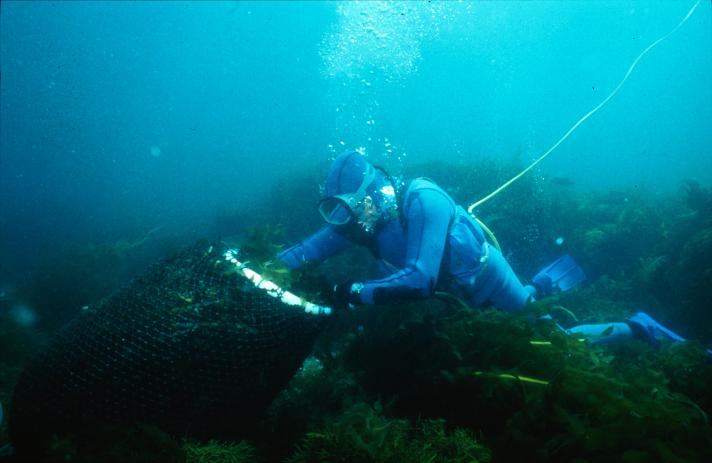x
Invasive species that are able to establish themselves in the European environment can be a serious threat to native species and habitats. The European Union has a framework to tackle the issue under the Invasive Alien Species Regulation (EU Regulation 1143/2014), which prioritises prevention of the introduction of non-native species and encourages their eradication where possible.
But there is also a third aspect to the EU strategy on non-native species: their management to minimise the harm they cause in cases where the species are already established. A project led by Portugal’s Polytechnic of Leiria has studied in detail what management of invasive species could mean in practice in the context of a number of invasive seaweeds found around the Iberian coastline.
The project, AMALIA (Algae-to-Market Lab Ideas), supported with about €465,000 from the Blue Labs strand of the European Maritime and Fisheries Fund, mainly focused on six seaweed and algae species: devil’s tongue weed (Grateloupia turuturu), harpoon weed (Asparagopsis armata), bladder weed or oyster thief (Colpomenia peregrina), wireweed (Sargassum muticum), Japanese kelp (Undaria pinnatifida) and green sea-fingers (Codium fragile subsp. fragile). These species are prevalent in the Pacific, especially around Japan, and around the coasts of Australia and New Zealand. But they are also now found along Europe’s Atlantic coastlines.
AMALIA has mapped where these species can be found around the coasts of Portugal and north-west Spain and has identified what the priorities are in terms of their management. For example, bladder weed is found in some locations around the Galician coast but is considered low impact and offering low economic benefits, and therefore is not a priority for management.
The other five species, however, according to AMALIA, could be targets for management – and that means making the most of what the species offer in terms of sustainable economic benefits. As the project noted in a December 2018 study report, “the collection from the coastal areas of these target species may become a solution and sustainable management practice contributing to the marine ecosystem resilience and even site restoration.”
In practice, this means bringing companies, researchers and conservation experts together to study how value can be derived from use of these natural resources in a range of contexts. In some cases, the potential uses are well-known because the species have been extensively exploited in the regions where they are native. Undaria pinnatifida, for example, has been cultivated as a crop in Japan for more than a thousand years and is now popular and available worldwide as wakame. Farming of the seaweed for food has become a $1 billion industry.
But this is just one possible way in which the EU could make use of the invasive algaes and seaweeds. Other possibilities are medicines, cosmetics, animal and fish feed, other forms of food and even as a sustainable alternative to plastic film used as food wrapping.
For example, devil’s tongue weed could be commercially interesting because of the anticoagulant properties of its extracts. Harpoon weed extracts are already being used in cosmetics and have antioxidant, antibacterial, antiviral, antifungal and anti-parasite properties, according to research by AMALIA participant Leonel Pereira, a professor at Portugal’s University of Coimbra and author of the book Edible Seaweeds of the World. Wireweed is able to absorb heavy metal pollutants, and could be used for environmentally-friendly antifouling paint used on ship hulls. Green sea-fingers also have antifouling and antifungal properties, and can absorb ammonia.
New products from the seaweeds could become available over the next two to three years, according to AMALIA. The project has worked with laboratories and students to assess some of the possibilities.
The lessons from AMALIA are also being explored by a spin-off project supported by Portugal’s Foundation for Science and Technology (Fundação para a Ciência e a Tecnologia). This project, titled Marine Invaders, will look in more detail at harpoon weed (Asparagopsis armata), one of the seaweeds covered by AMALIA. Marine Invaders will examine the plant’s distribution along the Portuguese coastline, its impact on native species and also on the invasive species wireweed (Sargassum muticum). The project will aim to understand how harpoon weed might spread in the future and its impacts, in order to recommend possible measures for its management.
x
Further information

